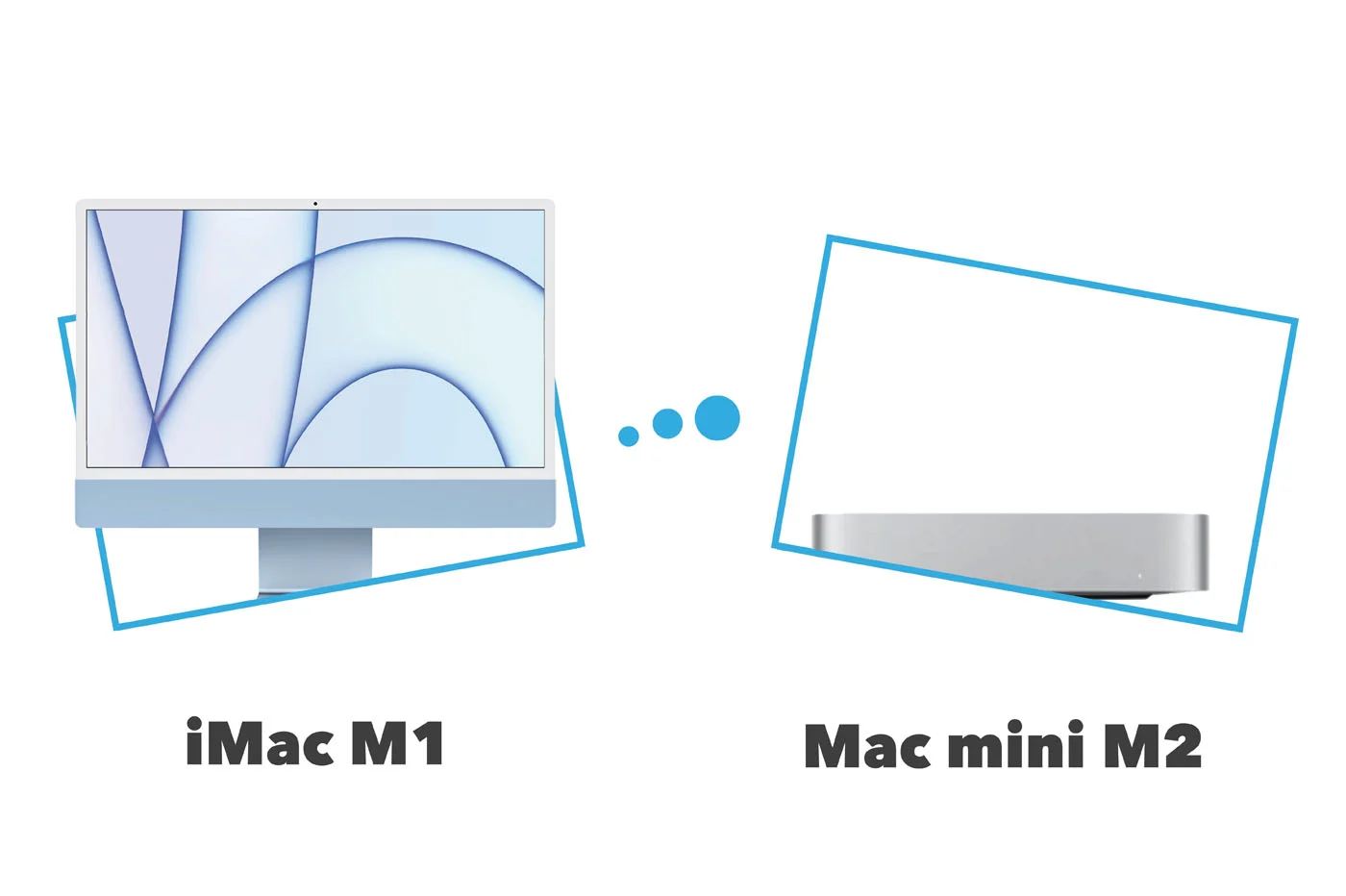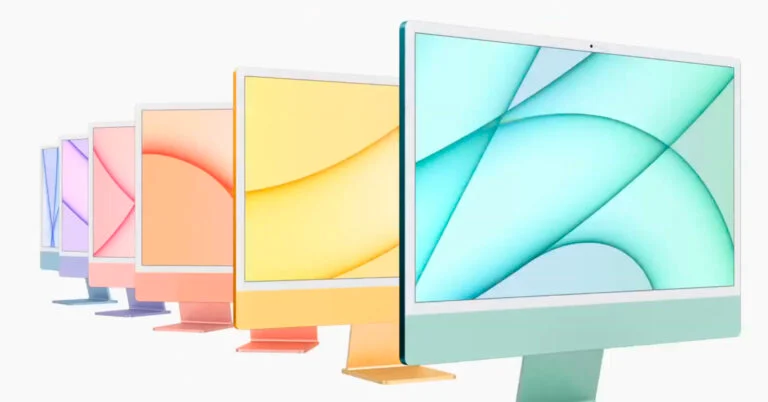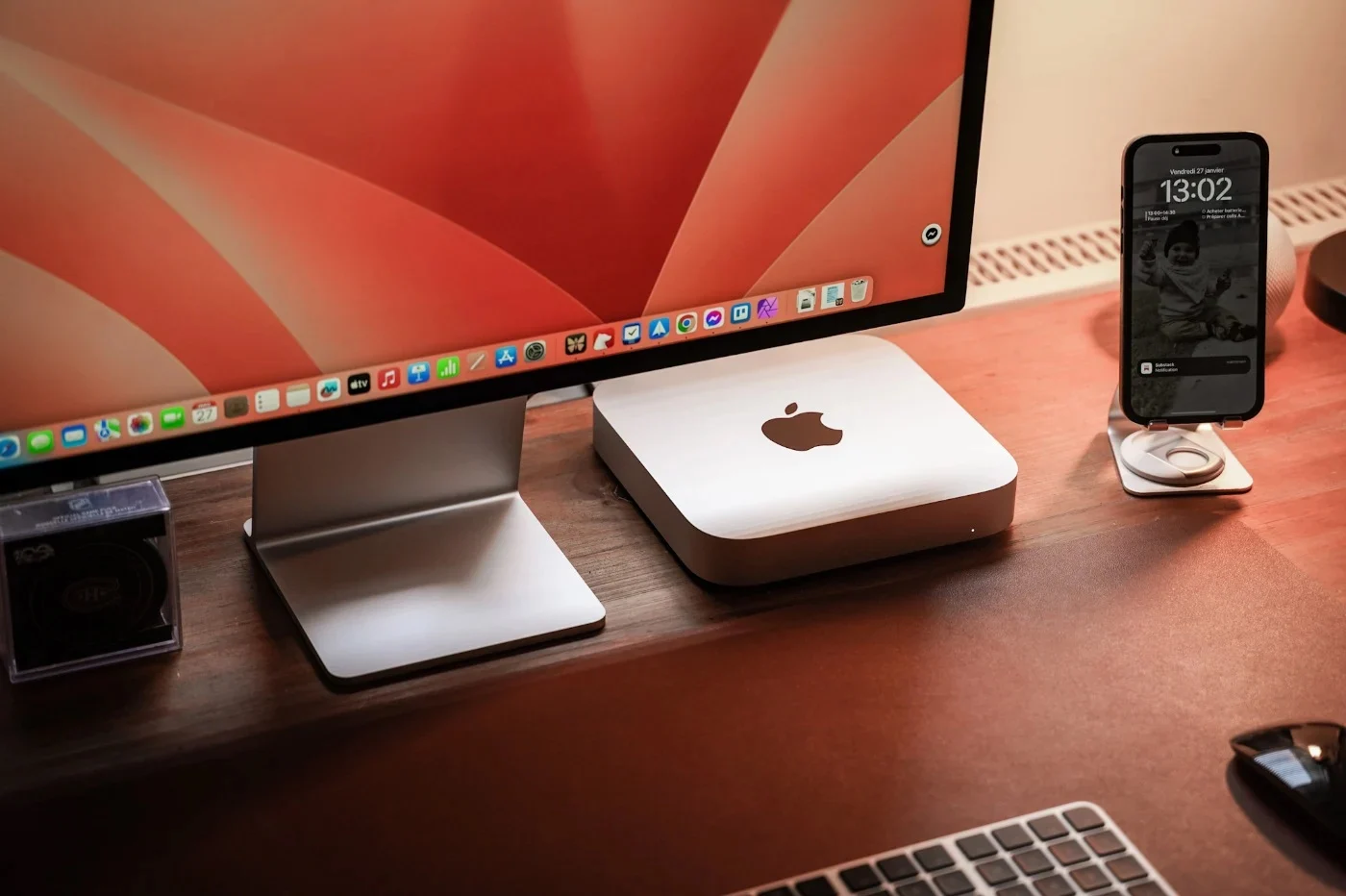Mac mini and iMac: Which Apple desktop computer is right for you?
Whether for the office or the family, opting for a fixed-mount computer can deliver considerable performance gains. But as with laptops, Apple's range is relatively complex, and many people hesitate between the two least expensive solutions from the Californian brand: the Mac mini Vs iMac. Here's our verdict.

First released in 1998, the iMac is probably Apple's most emblematic computer. With a curved design that was instantly recognizable before the current generation, it's renowned for its versatility and aesthetics and can be found in both traditional households and among graphic designers for whom stable hardware is a daily necessity. But that's without counting on a more compact alternative: the Mac mini.
Introduced to the market in August 2006, the Mac mini bears a striking resemblance to an Apple TV that's had a bit too much to eat between meals. In short, it's a central processing unit that integrates all the components needed for macOS to function properly, except for the control modules: no screen, no keyboard, and no mouse. So you have to buy iMac or Mac Mini separately. But that doesn't mean the device offers the same technical specifications as the iMac in terms of performance: as you'll see in this comparison, there are clear differences between the value proposition of the iMac and that of the Mac mini. Details.
Compact format with the Mac mini.
The iMac is therefore a large screen behind which are inserted all the parts that run the software, giving it its characteristic semi-convex shape until 2021. Since then, the format has been reworked to make the machine as thin as possible: the curved shell is a thing of the past. But it's a success: the edges measure just a few millimeters, like the MacBook Air. The only downside: from now on, the only new edition still available in Apple Stores measures 24 inches diagonally (no more than 21.5″ and 27″) - although some people can still afford the old iMac Pro, with its dark hue and more premium features.

The Mac mini, meanwhile, can be packed into any backpack with its featherweight of just over a kilogram. This is in stark contrast to the iMac, which never weighs less than 4 kg and is therefore not at all suited to nomadic use. This is not the case with the Mac mini, since with dimensions of 3.58 x 19.7 x 19.7 cm (for the version with M2 or M2 Pro chip), you only need to take a few cables with you and you can plug it into any setup to start working.
The iMac is less powerful than the Mac mini.
Make the comparison: while a (new) Mac mini can now be powered by the latest generation of Apple silicon chips, namely the M2 and M2 Pro, the iMac can only be equipped with the M1. A component that is not only a year behind its successors, but more than that. The M1 processor is limited to a maximum of seven CPU cores and eight graphics card cores, compared with twelve and nineteen respectively on the Mac mini - depending on its configuration.
This means that the iMac will find it harder than the Mac mini to withstand intense use, such as video editing with Adobe Premiere Pro or gaming sessions with demanding titles on Apple Arcade. If you want to open a lot of apps at the same time, ditto: the Mac mini M2 Pro can be delivered with thirty-two gigabytes of RAM, compared with a maximum of sixteen gigabytes on the iMac M1. The internal storage provided also differs. The iMac M1 chip offers a maximum of two terabytes, versus eight terabytes with the best Mac mini.

With or without a screen?
The iMac is the most complete of Apple's desktop computers since it's the only one that also comes with a screen. It is not just any screen, since it features the manufacturer's own Retina technology, which is also found on the iPad Pro, including the 2020 model used by some professionals. But that's not all, as its resolution reaches 4.5K, supporting millions of colors for a particularly striking rendering during film or drawing sessions. With this, luminance reaches 500 nits, for a monstrous diagonal of twenty-four inches.
With the Mac mini, the choice of display is yours. The best choice is of course the Pro Display XDR - also from Apple - but its price tag of over 5,000 euros is likely to put off more than one buyer. In this case, you can turn to other brands: Asians such as LG, Samsung, TCL, and Asus offer Mac mini-compatible products, both entry-level and larger, more expensive models. Moreover, the Mac mini can support up to three displays in its M2 Pro chip configuration, which should give free rein to the imagination of even the most seasoned hacker.

Not the same connectors on the iMac.
The other key difference between the iMac and the Mac mini is the list of connectors available on the rear of each machine. On the iMac, we have :
- a 3.5 mm headphone jack
- two Thunderbolt 4 ports (USB-C)
- a Gigabit Ethernet socket (available on request at an additional cost of twenty-six euros, or included for iMac with M1 processor including eight-core GPU)
- Two USB-3 ports (on iMac M1 with eight-core graphics card only).
- a 3.5 mm jack with support for high-impedance headphones
- an HDMI port supporting multi-channel audio output
- two USB-A ports
- two Thunderbolt 4 ports for the M2 version, or four for the M2 Pro version
- one Gigabit Ethernet port (configurable with 10 Gigabit f) Ethernet at extra cost)

iMac vs Mac mini: price and reviews.
In conclusion, the iMac is a more complete desktop computer than the Mac mini, but less powerful. Although its basic price is higher (1,549 euros for a 24" iMac with basic configuration), it's still more affordable than some iPhone 14 Pro and iPhone 14 Pro Max models. The classic iMac version will therefore be an ideal choice for individuals who want to enjoy a fluid macOS experience without having to invest time in a complicated set-up. From printers to architects, many also rely on the iMac or its iMac Pro incarnation for performance, and its reputation is well established: it's a sure bet.
If, however, you don't want the quality of the iMac's screen and, for example, want to play with a curved diagonal, or have an unused screen left at home, then you can buy the Mac mini. But you'll probably need to invest in several additional cables, and buy a keyboard and mouse separately: the Magic Keyboard and Magic Mouse 2 are the best references in this respect. The Mac mini is also an opportunity to travel more easily since it can be carried around easily thanks to its much less imposing design. In reality, the only thing we can reproach it for is its lack of screen, but it's hard to blame its very nature: that of a central processing unit.
The Mac mini is also more affordable than the iMac in general, starting at 699 euros from Apple. Quite simply, it's the cheapest Mac available in 2023. However, with maximum configuration and the Logic Pro X and Final Cut Pro X software included in the package, the price can quickly climb to over 3,000 euros.